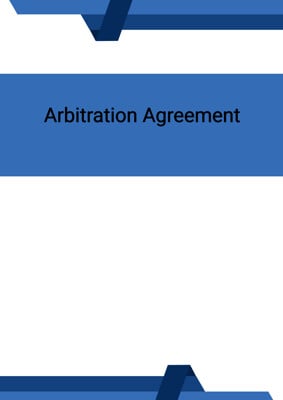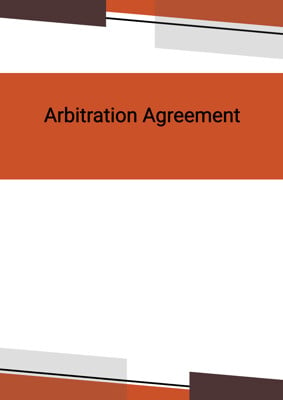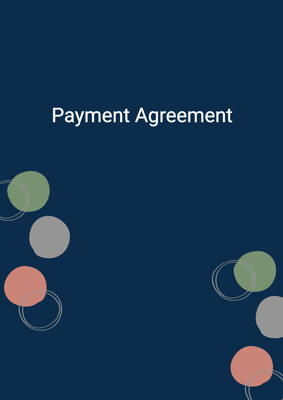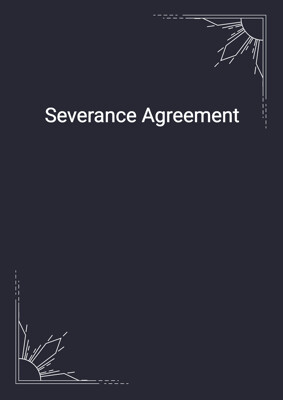How to Tailor the Document for Your Need?
01
Create Document
Fill in the details of the parties. You can click the "Fill with Member’s Information" button to complete it with information saved to your account.
02
Fill Information
Please fill in any additional information by following the step-by-step guide on the left hand side of the preview document and click the "Next" button.
03
Get Document
When you are done, click the "Get Document" button and you can download the document in Word or PDF format.
04
Review Document
Please get all parties to review the document carefully and make any final modifications to ensure that the details are correct before signing the document.
Document Preview
Document Description
The Payment Agreement is a document that outlines the terms and conditions for the repayment of a debt. It is important as it serves as a legally binding agreement between the debtor and the creditor, ensuring that both parties are aware of their rights and obligations.
The entire document consists of several sections that cover different aspects of the agreement. The first section is the introduction, which provides a brief overview of the agreement and the parties involved. It states that the debtor owes a certain amount of debt to the creditor and that both parties agree to enter into this payment agreement.
The second section is the debt acknowledgement, where the debtor acknowledges that they owe the debt in full to the creditor. This section is important as it establishes the existence of the debt and the debtor's obligation to repay it.
The third section is the payment plan, which outlines the specific terms of the repayment. It states that the debtor will make payments to the creditor on or before the associated dates set out in the payment plan. The payment plan also specifies the method of payment for each installment. This section is crucial as it provides a clear schedule for the debtor to follow and ensures that the creditor receives the payments in a timely manner.
The fourth section is the late payment fee, which states that if the payment is received by the creditor 10 days after its due date, a late fee of 5% will be charged. This section is important as it incentivizes the debtor to make timely payments and compensates the creditor for any delays.
The fifth section is the release, where the creditor agrees to release the debtor from any prior actions or claims related to the debt as of the date of the agreement. However, it does not release the debtor from their obligation to pay the debt according to the payment plan or limit the rights of the debtor in collecting the debt.
The sixth section is the default, which states that if the debtor defaults on any payments and fails to cure the default within a reasonable amount of time, the remaining unpaid debt balance will become due and payable immediately at the option of the creditor. This section is important as it establishes the consequences of non-payment and protects the rights of the creditor.
The seventh section is the warranties and representation, where each party represents and warrants that they have the authority and capacity to enter into and carry out their obligations under the agreement. This section ensures that both parties have the legal capacity to enter into the agreement and fulfill their obligations.
The eighth section is the assignment, which states that neither party can assign the agreement or sub-contract the performance without the prior written consent of the other party. This section protects the rights of both parties and ensures that the agreement cannot be transferred without mutual agreement.
The ninth section is the waiver, which states that no failure or delay by any party in exercising any right or remedy provided by law under or pursuant to this agreement shall impair such right or remedy or operate or be construed as a waiver or variation of it. This section ensures that the rights and remedies of the parties are preserved and cannot be waived or varied without explicit consent.
The tenth section is the governing law and jurisdiction, which specifies the jurisdiction and laws that will govern the agreement. This section determines the legal framework within which any disputes or issues arising from the agreement will be resolved.
The eleventh section is the severability, which states that if any term or condition of the agreement is held to be invalid by the court, the agreement shall be interpreted as if such invalid term or condition was not contained herein. This section ensures that if any part of the agreement is deemed invalid, the rest of the agreement remains enforceable.
The twelfth section is the entire agreement, which states that the agreement contains the whole agreement between the parties and supersedes any prior written or oral agreement between them. This section ensures that the agreement is comprehensive and that any previous agreements are no longer valid.
The thirteenth section is the counterparts, which states that the agreement can be executed in counterparts, and each counterpart has the same effect as the other. This section allows the parties to sign separate copies of the agreement, making it easier to execute.
In conclusion, the Payment Agreement is an important document that outlines the terms and conditions for the repayment of a debt. It covers various aspects of the agreement, including the debt acknowledgement, payment plan, late payment fee, release, default, warranties and representation, assignment, waiver, governing law and jurisdiction, severability, entire agreement, and counterparts.
How to use this document?
1. Review the entire document to understand the purpose and scope of the Payment Agreement.
2. Familiarize yourself with each section of the agreement, including the introduction, debt acknowledgement, payment plan, late payment fee, release, default, warranties and representation, assignment, waiver, governing law and jurisdiction, severability, entire agreement, and counterparts.
3. Ensure that both parties are clearly identified in the agreement, including their names and addresses.
4. Specify the amount of debt owed by the debtor to the creditor.
5. Create a detailed payment plan that includes the associated dates for each payment and the method of payment.
6. Consider including a late payment fee of 5% for payments received after the due date.
7. Discuss and agree upon any additional terms or conditions, such as warranties, representations, and assignment restrictions.
8. Determine the governing law and jurisdiction that will apply to the agreement.
9. Include a provision for the release of the debtor from any prior actions or claims related to the debt.
10. Clearly state the consequences of default, including the immediate payment of the remaining unpaid debt balance.
11. Ensure that both parties have the authority and capacity to enter into and fulfill their obligations under the agreement.
12. Review the agreement for any invalid terms or conditions that may need to be removed or modified.
13. Make sure that the agreement supersedes any previous agreements between the parties.
14. Consider executing the agreement in counterparts to facilitate the signing process.
15. Seek legal advice if necessary to ensure that the agreement complies with applicable laws and regulations.
Not the right document?
Don’t worry, we have thousands of documents for you to choose from:















